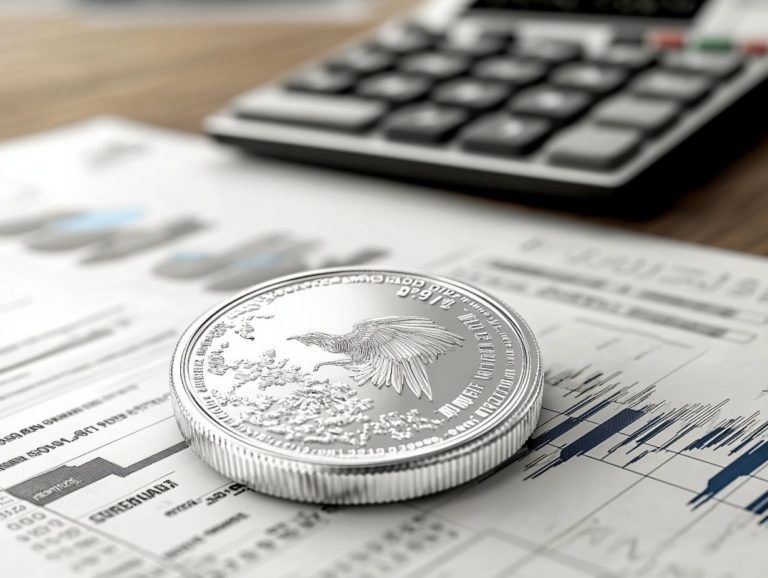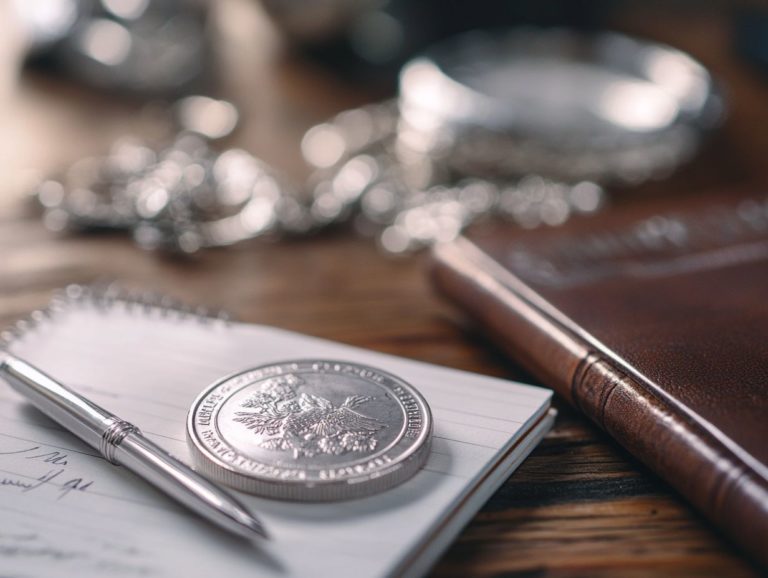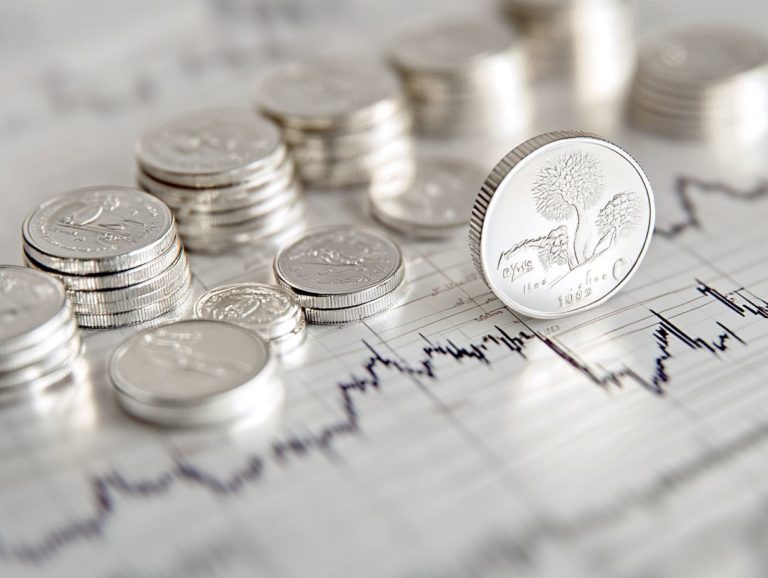5 Common Myths About Silver Investing
Silver has long been regarded as a compelling investment option, yet many individuals harbor misconceptions about its true nature and potential. Discover five common myths about silver investing that could hold you back!
This article addresses misconceptions surrounding silver investing, from misunderstandings about its connection to gold to its efficacy as a hedge against inflation. It offers clarity on what silver genuinely provides.
Whether you re contemplating the addition of silver to your portfolio or simply seeking to deepen your understanding, this guide delivers valuable insights into the realm of silver investing.
Contents
Key Takeaways:
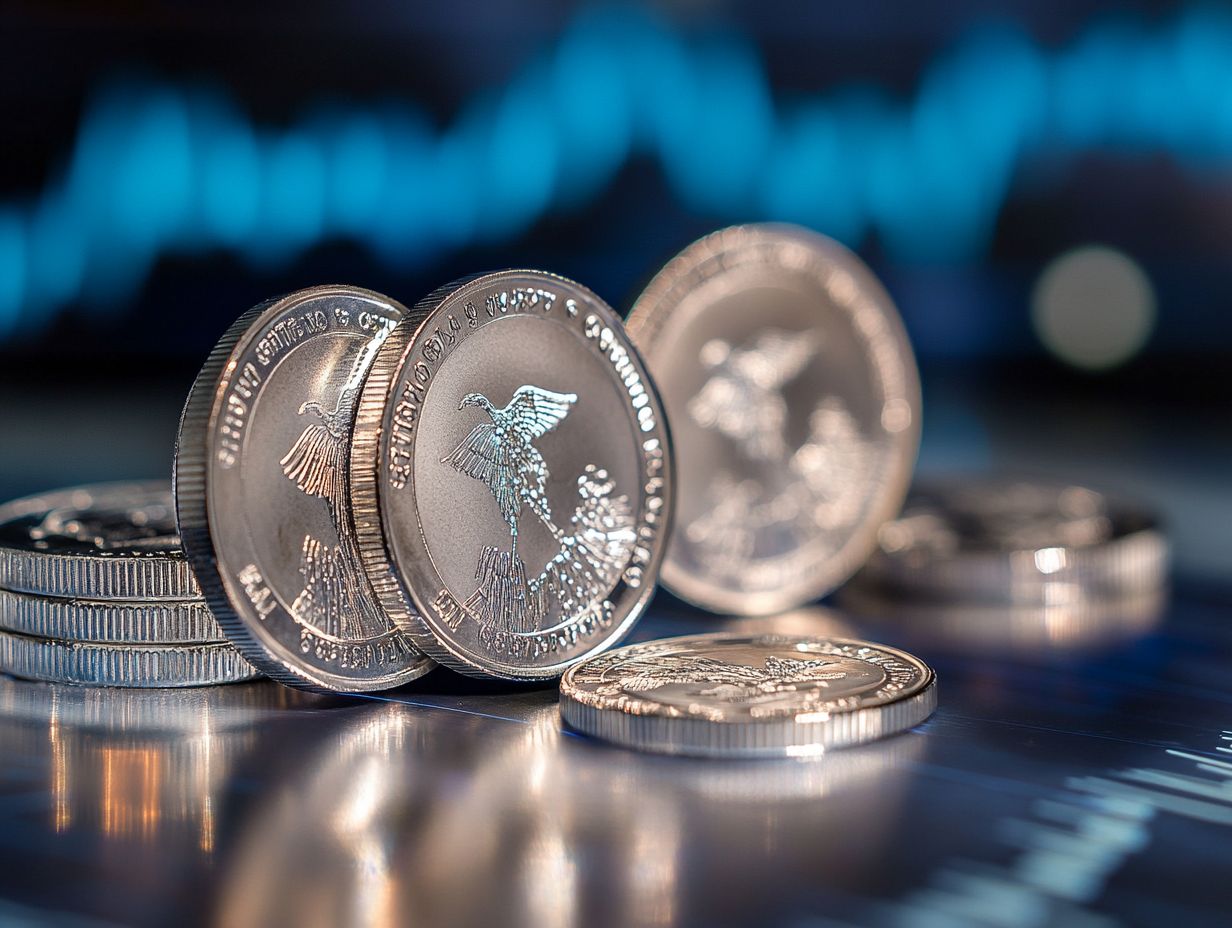
- Silver is not just another form of gold and should not be treated as such in investment decisions.
- While there are risks associated with silver investing, it can also offer potential benefits such as diversification and protection against market volatility.
- Contrary to popular belief, silver can be a good hedge against inflation, as its value tends to rise during times of economic troubles.
1. Silver Is Just Another Form of Gold
While you might see silver as a unique gem in the investment landscape, it s often grouped with gold both being precious metals that play pivotal roles in diversifying your portfolio and preserving wealth. The market dynamics for silver and gold are similar, particularly in how they react to economic troubles and volatility.
Grasping the relationship between silver and gold can significantly refine your financial strategy. Historically, both metals have served as safe havens in times of market instability, typically gaining value when other investments stumble.
When you analyze their performance, you ll notice that during economic crises, like the one in 2008, both gold and silver saw price increases, though at varying magnitudes. For instance, gold surged by nearly 25% that year, while silver also enjoyed a significant uptick, albeit smaller in comparison.
Market fluctuations driven by factors such as geopolitical tensions and shifts in interest rates can greatly influence their prices, making both metals compelling components of a well-balanced investment strategy.
2. Silver Is a Risky Investment
Investing in silver comes with a level of risk that many retail investors often overlook. The price volatility of silver can lead to significant financial losses or, conversely, unexpected short-term gains. To truly grasp the investment potential of silver, you must develop a keen understanding of market dynamics, especially the factors that drive price fluctuations and demand.
Consider how geopolitical tensions, shifts in industrial demand, and economic indicators can dramatically influence silver prices. For example, during the 2008 financial crisis, silver prices experienced wild swings reflecting both safe-haven buying and a decline in industrial usage.
Then there was the infamous attempt by the Hunt brothers in 1980 to manipulate silver prices, which resulted in a price spike that collapsed within days. This episode highlights the extreme volatility that can impact investors.
These historical events serve as critical reminders that silver investments are susceptible to a range of unpredictable elements. Therefore, conducting thorough research is not just beneficial; it s essential for navigating the complexities of this market.
Start exploring your silver investment options today to diversify your portfolio!
3. Silver Is Not a Good Hedge Against Inflation
Contrary to popular belief, silver might not be the effective hedge against inflation you think it is especially during economic uncertainty. Its performance can swing wildly due to various external factors, like global political events and industrial demand.
If financial security is your goal, you might find that other assets, particularly gold, provide more reliable protection against inflationary pressures. Take economic downturns, for example.
When industrial demand for silver used in electronics and solar panels drops, you could see price declines that undermine its intended role as an inflation hedge. Data from recent years shows a pattern: when inflation rates spiked, silver struggled to keep up with other commodities.
In 2021, as inflation hit a 39-year high, silver prices only managed a paltry 4% increase.
Experts often point out that when investors seek safe-haven assets, gold tends to outshine silver, thanks to its long-standing reputation as a stable store of value. Silver can play a vital role in your diversified portfolio, but don’t rely solely on it for inflation protection!
4. Physical Silver Is the Only Way to Invest
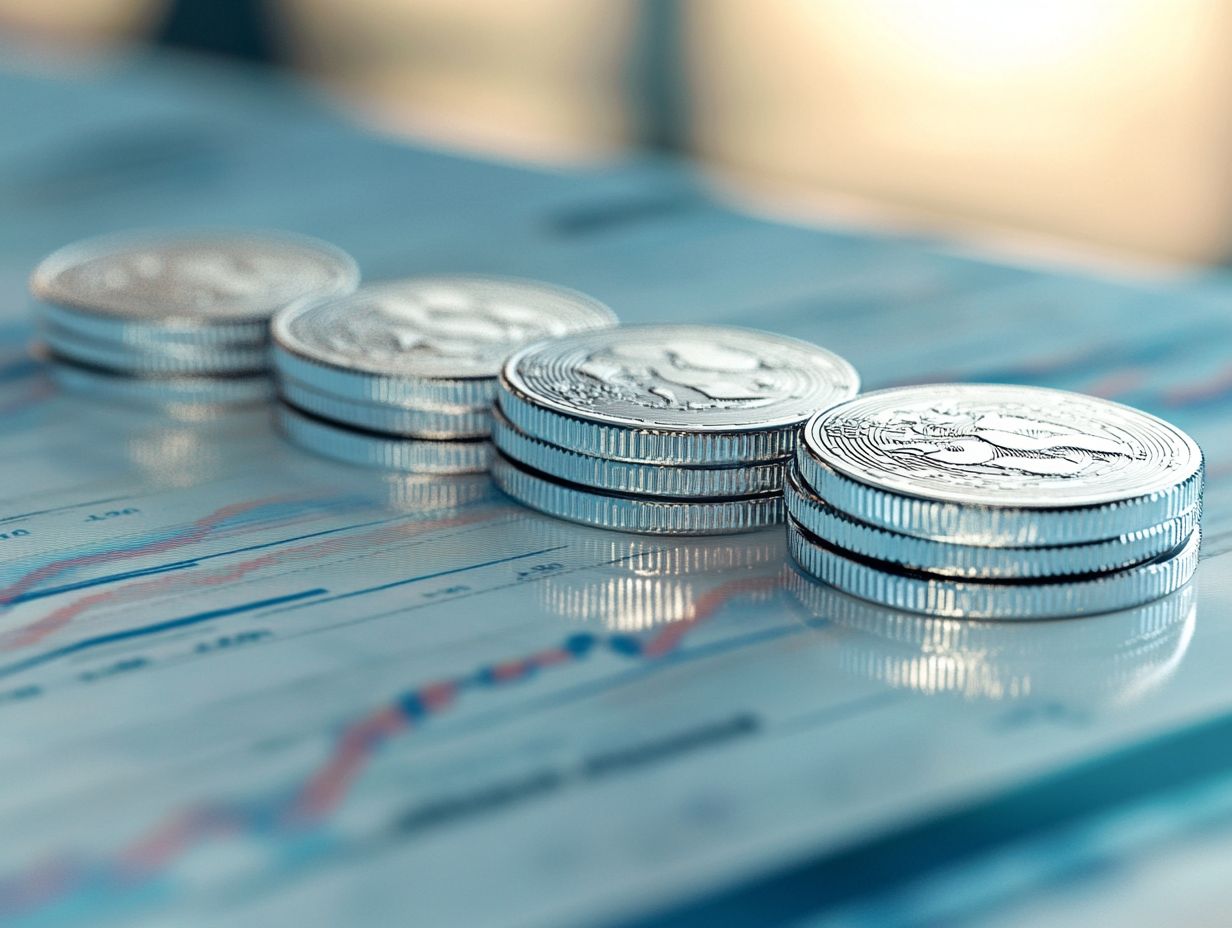
While physical silver think coins and bars often reigns supreme as the most authentic investment in this precious metal, you’re not limited to just that. There are numerous alternative investment avenues available on online platforms that can enhance your liquidity and provide diversification benefits.
Options like fractional silver coins or exchange-traded funds (ETFs) funds that hold a collection of assets can be excellent alternatives if you’re not ready to dive into physical assets. These digital alternatives not only grant you easy access as a retail investor, allowing you to enter the market with a smaller initial investment, but they also come with the convenience of online trading.
You might feel that nothing can replicate the tangible experience of holding physical silver, which highlights the metal’s intrinsic value. However, concerns about the authenticity and security of digital options can create barriers.
Consider ETFs: while they offer exposure to silver prices, they often lack the same direct ownership of the physical metal, which can leave you feeling uncertain during market fluctuations.
5. Silver Is Only Valuable for Industrial Use
The belief that silver s value is exclusively tied to its industrial uses significantly underestimates its potential as an investment vehicle. In today s financial landscape, precious metals act as a hedge against economic downturns.
While industrial demand is certainly a key player in price determination, factors like scarcity and investment interest also enhance silver’s long-term value. In recent years, savvy investors have begun to view silver not merely as a component for electronics or solar panels but as a strategic asset that can effectively diversify portfolios.
Market analysts often point out that silver s relatively low price compared to gold makes it an attractive option for both newcomers and seasoned investors alike. According to the World Silver Survey, global silver investment demand surged by 19% in 2021.
This underscores a burgeoning trend among individuals seeking exciting opportunities for wealth preservation. During times of inflation or economic uncertainty, silver often retains its value, serving as a reliable store of wealth an attribute that financial advisors frequently recommend to clients in search of stability in their investment choices.
What Is Silver Investing and How Does It Work?
Silver investing involves acquiring physical silver, silver coins, or financial instruments linked to silver prices. The intent is to increase value, preserve wealth, and diversify your portfolio. Knowing how silver fits into your financial plan is crucial for making smart investments!
Market dynamics and economic conditions can significantly impact pricing and liquidity. Staying alert is key to navigating these factors effectively.
There are numerous avenues to explore in silver investments, including exchange-traded funds (ETFs), futures contracts, and mining stocks. Each option has its own set of advantages and risks. Conduct thorough research before diving in!
Having adequate financial resources is crucial, whether you re looking to purchase physical silver or engage in market trades. Educating yourself as an investor equips you with insights into market trends, historical performance, and key indicators that influence silver prices. This knowledge will ultimately pave the way for sound investment strategies.
What Are the Benefits of Investing in Silver?
Investing in silver presents a wealth of advantages:
- Diversify your portfolio
- Protect against inflation
- Preserve your wealth
These benefits make it a compelling choice for those navigating the unpredictable waters of the financial landscape.
Silver has historically served as a dependable hedge against economic downturns, significantly bolstering your financial security. For example, during times of inflation, silver s value often sees an upswing, evidenced by its remarkable 400% appreciation during the inflationary crisis of the 1970s.
Rising industrial demand for silver especially in technology and renewable energy sectors has sparked significant interest in the market. This has led to a notable 40% price increase over the past year alone. This trend underscores not only the importance of silver investments but also the potential for substantial returns, enhancing your overall wealth management strategies.
What Are the Different Ways to Invest in Silver?
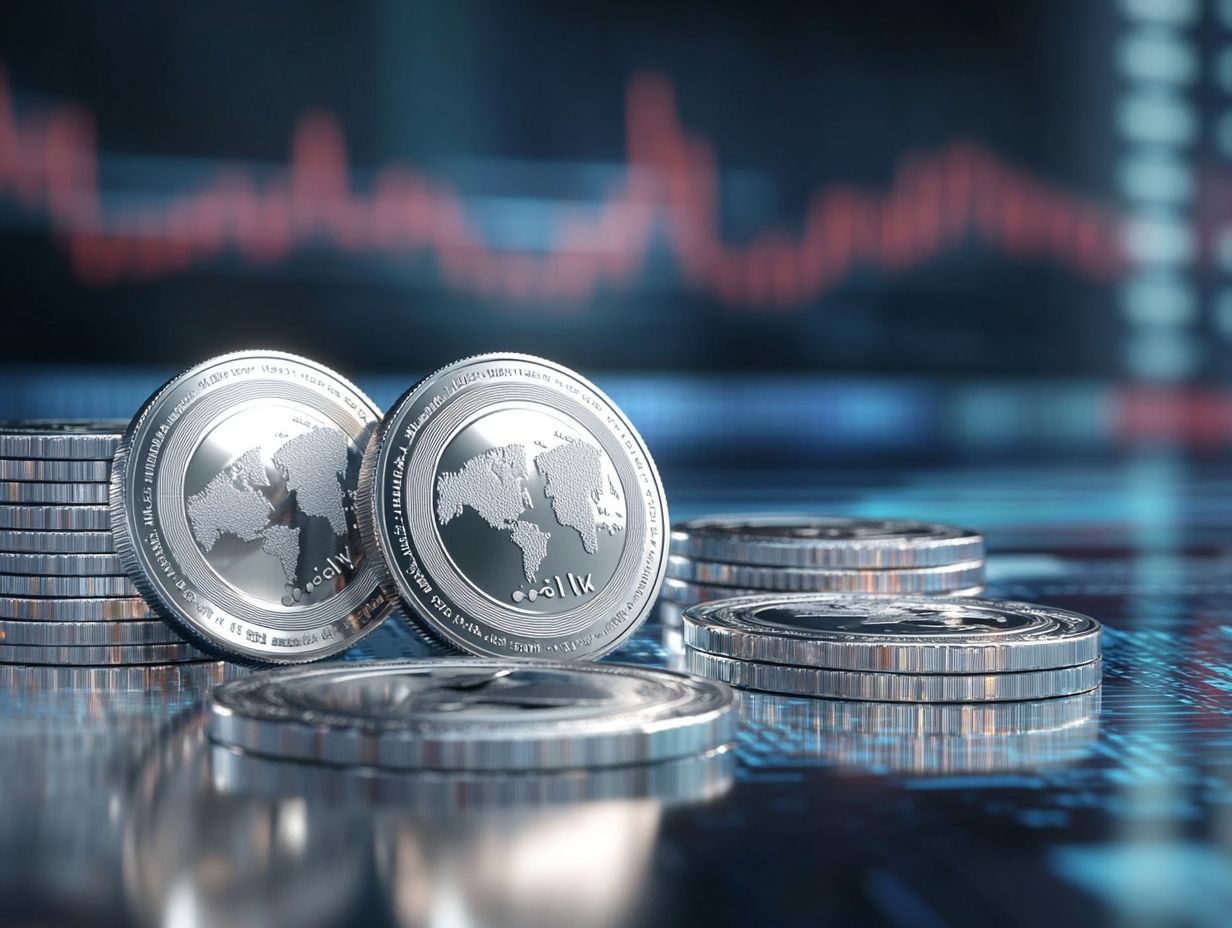
You have a variety of options when it comes to investing in silver:
- Buying physical silver think coins and bars
- Utilizing investment vehicles like ETFs
ETFs can be accessed easily through online platforms and come with different levels of risk and liquidity. You might also explore silver mining stocks or mutual funds that specifically target the silver market. Each of these investment types carries its own cost structure and potential return profile. For instance, while physical silver may come with higher transaction costs and lower liquidity, ETFs typically only have management fees to consider.
Weigh these factors carefully, keeping your risk tolerance and investment strategy in mind. By staying attuned to market trends and global economic indicators, you can make informed decisions that align seamlessly with your financial goals!
What Are the Factors That Affect the Price of Silver?
The price of silver is shaped by a myriad of factors, from market fluctuations to demand dynamics in both industrial and retail sectors, as well as broader economic indicators. Stay informed to make the best investment choices!
For example, during economic downturns, you might notice a surge in silver demand as investors seek safe-haven assets. Historical data from 2008 illustrates this perfectly while stock markets stumbled, silver prices initially soared as people flocked to precious metals. Similarly, geopolitical events, like conflicts or trade disputes, can create uncertainty that pushes up demand for silver as a hedge against instability.
A notable instance is the sharp price increase in 2011 amid global economic unrest, highlighting how interconnected these factors are with silver’s market performance.
What Are the Risks Associated with Silver Investing?
Investing in silver can be exciting and rewarding, but it comes with risks you should know about. You will face price volatility, changing market dynamics, and the challenge of keeping a well-balanced financial strategy during economic uncertainties.
For instance, sudden changes in supply and demand often driven by geopolitical events or shifts in industrial usage can result in significant price fluctuations. Take, for example, the sharp rise in silver prices during economic instability. This can quickly reverse. You may face steep losses.
To navigate these challenges, consider:
- Diversifying your portfolio to include other asset classes
- Systematically investing over time to average out costs
- Using stop-loss orders to limit potential losses
Staying informed about market trends and economic indicators is crucial in making well-informed decisions.
How Can One Get Started with Silver Investing?
Getting started with silver investing requires you to have a solid grasp of the market, a clear financial strategy, and access to reliable resources that will guide you through the intricacies of this precious metal.
Begin by educating yourself on the key factors that influence silver prices, such as industrial demand, geopolitical events, and overall economic factors that affect markets. Choosing a reputable broker is essential; you ll want someone who understands the nuances of precious metals and can offer tailored advice that aligns with your investment goals.
Engaging in online forums or local investment groups can enhance your understanding and expose you to various strategies. Starting small and gradually ramping up your investment as you build confidence and knowledge can be a wise approach.
Learn more about silver investing in this informative video.
Frequently Asked Questions
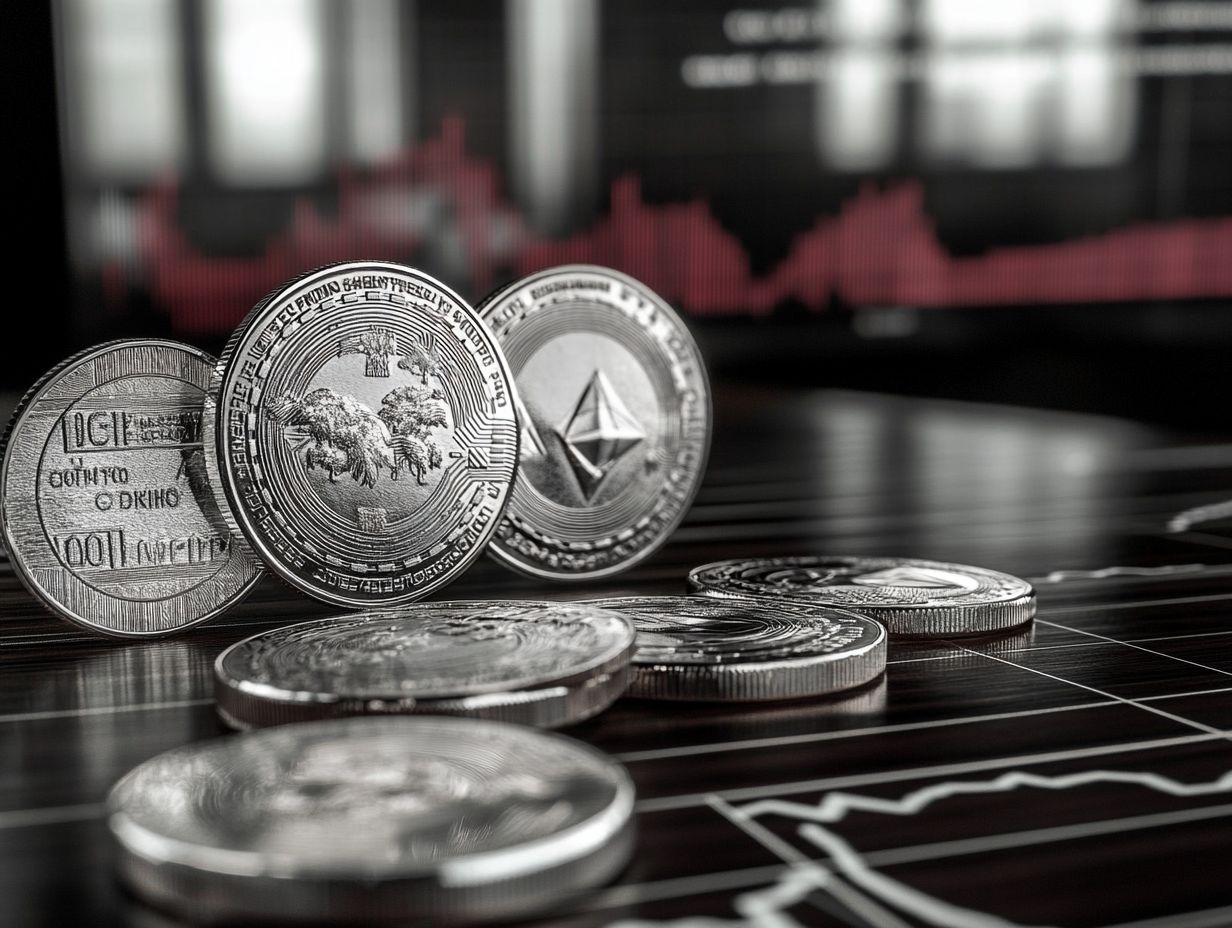
What are the common myths about silver investing?
Common Misconception: Silver is not a valuable investment compared to other precious metals. Actually, silver has been a form of money for centuries. It s valuable because it s used in many industries, from technology to manufacturing.
Is silver investing a risky venture?
Common Misconception: Silver investing is risky and volatile. While all investments carry some level of risk, silver is actually less volatile compared to other assets like stocks or cryptocurrencies. Its value tends to be more stable and less affected by market fluctuations.
Is silver investing only for experienced investors?
Common Misconception: Silver investing is only for experienced investors. While it is important to do your research and understand the market before investing, there are options for both experienced and novice investors. With the rise of online platforms, it is now easier than ever for anyone to invest in silver.
Do I need a large amount of money to invest in silver?
Common Misconception: You need a large amount of money to invest in silver. Contrary to popular belief, you don’t need a large sum of money to invest in silver. There are various investment options available, such as buying physical silver or investing in silver ETFs, that require a smaller initial investment.
Is physical silver the only way to invest in silver?
Common Misconception: Physical silver is the only way to invest in silver. While buying physical silver is one way to invest in the metal, there are also other options available, such as investing in silver mining companies, silver futures, and silver-backed cryptocurrencies. These alternative methods can offer diversification and potentially higher returns.
Are there any tax implications for investing in silver?
Common Misconception: There are no tax implications for investing in silver. Just like any other investment, there may be tax implications for buying and selling silver. It is important to consult with a financial advisor or tax professional to understand how investing in silver may impact your taxes and how to properly report your gains or losses.













